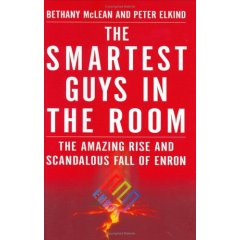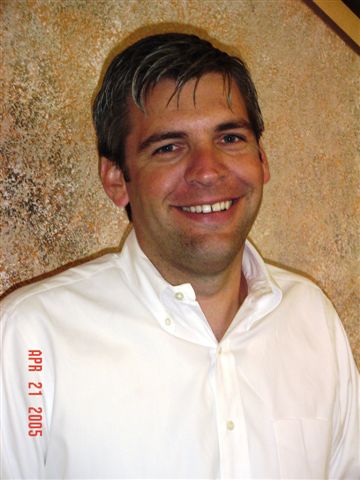
I finished reading Bethany McLean and Peter Elkind’s account of the collapse of Enron, “The Smartest Guys in the Room – The Amazing Rise and Scandalous Fall of Enron,” last fall. So I was really interested to see the documentary based on the book, “Enron, The Smartest Guys in the Room.” The book is a great read for those that like a business story ala “Barbarians at the Gate,” or “Den of Thieves.” The authors bring you back to the go go 90’s feeling at Enron, and give you a good sense for the various characters involved. The book and documentary together are a great one-two punch, they make this tragic story come alive.
At it’s biggest point, Enron was the United State’s seventh largest company, with a market cap of over seventy billion dollars. Enron’s descent into accounting fraud began in the 1990s when the company won an okay from it’s auditors to use a type of accounting known as “Mark to market.” Essentially, this type of accounting allows for the booking of _potential_ future profits as earnings on a current income statement. That means that when Enron won a large, long term deal it could recognized the future estimated worth of the deal to Enron. While allowable under GAAP for certain types of business, mark to market was a wholly inadequate form of reporting to give shareholders insight into Enron’s business. The company quickly became addicted to this extremely subjective form of revenue recognition, setting the stage for future, much more egregious blurring of the accounting lines.
I think it was useful to read both the book and see the documentary, though I found the two diverging at points. Certainly each takes a “point of view” of either the authors or the director/producers. While they mostly follow the same path, in fact, Bethany McLean the book’s co-author is interviewed throughout the film, the documentary diverges in spots.
One path the documentary goes down that I did not remember so much in the book was the insinuation that the Bush family is in Ken Lay and Enron’s back pocket. While I don’t remember that from the book, the guilt-by-association is blatant in the documentary. It may be true that the Bush’s gave improper favors to Enron or Lay, but the documentary doesn’t come out and say that, and certainly offers no proof of any sort. In merely insinuates. It’s a curious inclusion in what otherwise stacks up as a credible indictment of Enron’s senior executives.
The other topic I found to be somewhat non-genuine was the “rank and yank” example of Enron as a really tough culture to work in. I’m sure Enron was a macho/tough culture, “Guys with Spikes” as they put it, and I’m sure they did in fact use a tough 1 to 5 ranking system where they fired or moved out the bottom 15% of performers. What struck me as funny I guess is that the company best known for “rank and yank” (a pejorative term for philosophy that has very pragmatic and humanistic reasons associated with it) is one of the business world’s most respected, General Electric. Of course, the way the system is applied has a lot to do with the what you get out of it, and it does sound as though its practitioners at Enron were, well…bastards.
One of the best pieces of watching the documentary after having read the book are the actual recordings of various Enron players. On one infamous earnings call, after the deterioration of Enron had begun, an analyst presses CEO Jeff Skilling on Enron’s inability to produce a balance sheet at the same time it published its income statement. Skilling, the CEO of the seventh largest company in the U.S. (though at that time it may have fallen some), is heard clearly on the line calling the guy an “Asshole.” This unprofessional behavior was just one of many new signs that Enron was not what it appeared to be. In other recordings, you hear energy traders at Enron actively (and perhaps illegally) manipulating California’s deregulated electric grid- adding to California’s rolling black outs.
At any rate, I highly recommend both the book and the documentary. The two together give a great overview of what happened at Enron. The book and the film give great insight into the people that were responsible for Enron’s fall (Lay, Skilling, Fastow, and a host of others), as well as the intricacies of some of their misdeeds. The descriptions of how Andy Fastow, Enron’s CFO, used Special Purpose Entities to manage and twist Enron’s earnings, and at the same time get himself rich, is eye opening. After reading these sections alone you can’t help but think that Fastow’s plea bargain, getting himself only ten years in prison, was criminal in of itself.
It will be interesting to see how things play out in the Ken Lay/Jeff Skilling trial. While the news accounts certainly draw out and paints these top level characters as the bad guys, the book unearths not just them but the system of interlaced people, investment banks, corporations, accounting firms, and lawyers that all failed, and all contributed to this catastrophe.



No comments:
Post a Comment